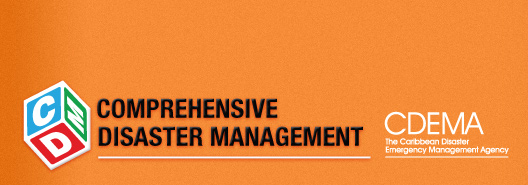|
What are Earthquakes?
An earthquake is sudden motion or trembling of the ground produced by the abrupt displacement of rock masses.
How do they occur?
The earth's outer shell is divided into seven major and some smaller plates which are constantly active. They push against, pull away from, or grind past one another. Forces build up as the plates attempt to move in relation to each other and when energy, which naturally occurs within the earth, becomes disturbed or strained, it releases itself, causing the violent shaking that we know as an earthquake.
After a large earthquake there may a series of smaller, shaking movements called aftershocks. Aftershocks are not usually as strong as the first earthquake, but can still cause damage.
The magnitude of an earthquake is measured using a Richter Scale. This is was created by Charles F. Richter in 1935. It’s not a machine but a logarithmic measurement of the amount of energy released by an earthquake. Earthquakes with a magnitude of at least 4.5 are strong enough to be recorded by sensitive seismographs all over the world.
Where do Earthquakes occur?
Although it's possible for earthquakes to occur in anywhere in the world, seismologists have concluded that most quakes are seen and felt in three specific areas:
- Pacific Seismic Belt:
This area is found around the outer edges of the Pacific ocean. Nearly 80-percent of all large quakes occur in this region. The Pacific seismic belt measures from Chili to South America to the western region of the United States, including the southern tip of Alaska, the Aleutian Islands, Japan, New Guinea and New Zealand.
- Alpide:
The Himalayas, Mediterranean and the Atlantic make up the Alpide belt region. Approximately 18-percent of all earthquakes occur in this area.
- Mid - Atlantic Ridge:
The mid-atlantic ridge is the third most likely area where quakes occur, and covers the region of from the north-south axis of the Atlantic to the Arctic Ocean to the southern-most tip of Africa.
Issues
Earthquakes can be deadly. They must never be underestimated because it isn’t possible to predict when an earthquake will strike. The physical effects of an earthquake are felt for about 2-3 minutes – sometimes even less than that. However, during that short amount of time, a tremendous amount of destruction can take place. Depending on the type and strength of the quake, damage can be seen in soil, buildings, homes, pipelines, railways, bridges, and people. Earthquakes very often cause fires, disease, contaminated water sources, tsunami waves, and infection.
Also, earthquakes can take lives. Casualties may be caused by direct and indirect hazards such as:
- Direct Hazards
- Total or partial collapse of structures due to poor design and construction materials.
- Falling debris and dust from rubble.
- Transportation casualties due to collapse of bridges etc.
- Floods from collapsed dams or river banks.
- Release of hazardous materials.
- Tsunamis, loss of life by inundating low-lying coastal areas.
- Indirect Hazards
- Release of hazardous material.
- Exacerbation of chronic diseases
Most earthquake-related injuries result from collapsing walls, flying glass, and falling objects.
History
1. When?
June 7th 1692
Where?
Port Royal, Jamaica
Aftermath?
Port Royal is known as a Jamaica’s unofficial first capital city. It has been made popular over
the years through pirate stories, and the story of its destruction. In 1692, residents heard
what they thought sounded like thunder and immediately after the earth began to shake.
There were three shocks – although the first wasn’t very severe, the last one was. Much of
the town sank below the sea and about 2,000 people died as a result of the earthquake
and a resulting tsunami; about another 3,000 died of injuries and disease in the following
days.
2. When?
January 12th 2010
Where?
Haiti
Aftermath?
The year 2010 had just begun when the news of a devastating earthquake in Haiti spread
across the world. It was described as the worst earthquake in 200 years and measured
7.0 on the Richter Scale. The initial earthquake was followed by at least fifty two
aftershocks, all greater in magnitude than 4.5. Haiti was described as flattened, as almost
everything from national landmarks to private homes was almost completely destroyed. An
estimated three million persons were affected by the quake, and the death toll finally
lingered around 250,000. The city’s morgues were overwhelmed and many had to be
buried in mass graves. About 300,000 persons were injured and about one million persons
were left homeless. Communication systems, air, land, and sea transport facilities,
hospitals, and electrical networks had been damaged by the earthquake, which slowed
rescue and aid efforts. There was also confusion about who was in charge of the rescue.
Months after the earthquake, Haiti remained devastated. Many families still lived in tents
and there was still much reconstruction that needed to take place. Haiti was already one of
the poorest countries in the world and after the quake any hope for an economic revival
were destroyed.
back to top
|












